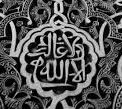
Re: the recent three posts here about racism I’ve observed. I have been trying to understand where our racist impulse comes from. After some reflection, I have to admit that there is something off in our South Asian attitudes. Something so deeply ingrained that we don’t even notice it or speak about it.
In recent years in America, some Pakistanis have tried to wrestle with our racism, like this moving piece by Professor Fawzia Afzal Khan. Her explanation that our racism is a colonial legacy, though not wrong, misses a deeper truth.”
Escaping The Caste System
Many South Asians converted to Islam to escape the caste system. But ironically it remains a powerful force dictating our social behavior – and in the actions of our leaders. When we look down at dark people, we are really looking down at Untouchables.
Let’s start with this BBC piece: “Why are many Indian Muslims seen as untouchable?”
A book by Ali Anwar says while Dalits are called asprishya (untouchable) in Hindu society, they are called arzal (inferior) among the Muslims. A 2009 study by Dr Alam found there was not a single “Dalit Muslim” in any of the prominent Muslim organisations, which were dominated essentially by four “upper-caste” Muslim groups.
In theory Islamists preach racial equality. In practice there is a strong undercurrent of discrimination against African-Americans.
Many Black converts (as well as American-born Muslims of Arab and South Asian background) notice something is off. But can’t exactly identify the source of the problem.
Not Religion But Castes
They know it’s not religion, because the Quran directly reject racism. And they know it’s not classic American racism, because these Islamist movements (and their key leaders) are imports from the Arab world and South Asia.
I can say that the problem is particularly acute in South Asian communities. The reason: our ancient caste system still shapes identity.
Hindu Castes Hierarchy
Let’s remember that most South Asian Islamists are from families who became Muslim only in the past 500 years. They are shaped by the original Hindu hierarchy of castes. Growing up in Pakistan, our teachers drilled into us the failures of Hinduism, which we learned locked people in castes. Each caste represented part of the body of God:
Brahmin: the elite priests and scholars (the head)
Kshatriyas: warriors, administrators, and rulers (the hands)
Vaishyas: artisans, farmers, and merchants (the legs)
Shudras or Dalits: manual laborers (the feet), the untouchable aboriginal population of India, de facto slaves to the Aryan elites who invaded South Asia from the north and prevented them from ascending the caste ladder.
(Note that skin color gets generally gets darker as you go down the caste system. Dalits tend to be the darkest-skinned.)
Castes Survived Islam
When Hindus in the subcontinent converted to Islam, the elite ones wanted to keep the good caste position they enjoyed. So they adopted Muslim names with religious connotation in order to signify their status. Brahmin priestly elite adopted titles like “moulana.” Kshatriyas ruler-administrators adopted titles like “sayyed.”
Deciphering Origins
If you look carefully, you can see that the many of the South Asian Islamist elite in the US have last names to indicate their family’s ancient caste:
Maududi, the Deobandi godfather, is clearly from the Brahmin caste: His family’s adopted Arabic name comes from wadada (“beloved by God”), the chosen ones. If he were from a Dalit family there is no way this would be his last name.
Yasir Qadhi, the chaudry of Al-Maghrib, is clearly Kshatriyas: Qadi is a judge administrator.
Nouman Ali Khan, the scandal-linked preacher, is similarly Kshatriyas: Khan is a term for the ruling class.
These guys all originally come from upper caste Hindu families. It shouldn’t be a surprise that they tend to have lighter skin tone (see Nouman Ali Khan’s shirtless selfies). The reason these people rise to leadership is – in a sense – embedded in their names.
Hidden Truths..
This is a truth that we South Asian elites know – but don’t talk about. The repressed caste roots silently drive much of what happens in our communities.
Now let’s talk about skin color. If you’re Sudanese or Somali, you have a higher status. First of all, you are part Arab. Second, you are not the descendant of slaves – unlike African-American converts.
So converts like Siraj Wahaj and Zaid Shakir try to gain recognition and equality as preachers. They will be used but never fully accepted by the caste elite. And if they step out of line, they can be quickly discarded in a way that could never happen to Yasir Qadhi.
A Bitter Pill
This unspoken reality is a bitter pill to swallow for my African-American friends. In a caste system, you can never truly escape your roots. The descendants of slaves will always be descendants of slaves.
As the BBC article on Muslim untouchables states, “The moral of the story: you can try to leave caste in India, but caste refuses to leave you.”
So the Islamist elite that sets the community’s agenda has brought the old Hindu caste mentality into our 21st Century Muslim-American lives.
This is why the current leadership of our Islamist-dominated community organization can never fully accept our Black brothers and sisters as equals.
The question is: When are we going to have a conversation about this out in the open in America? I wonder if people on social media already are…
